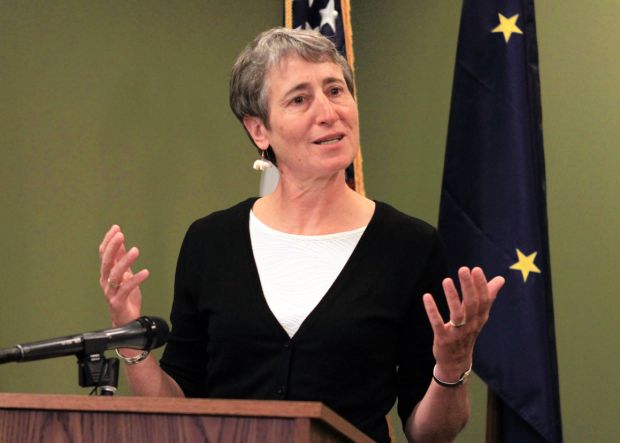After a wildfire risk assessment federal agencies have converged on a game plan. Interior Secretary Sally Jewell is advancing a new wildfire-fighting strategy that protects a wide swath of sagebrush country in the intermountain West and home to a struggling bird species. Much of the affected region is in the area John Thune wants to practice-bomb.
Rangeland wildfires in the West have grown more massive and destructive in recent decades. Scientists say warmer and drier summers have increased the length of the region's wildfire seasons, which are made worse by fire-prone invasive species, particularly cheatgrass. Interior officials later said U.S. wildlife officials would continue analyzing sage grouse data and decide whether protections are warranted by fall. One of the possible changes suggested at the conference by BLM Director Neil Kornze was to put the protection of rangeland resources ahead of property. John Freemuth, a public land policy expert and Boise State University professor, said a new firefighting approach that considers the entire ecosystem could work if the various agencies involved aren't overwhelmed by its complexity or end up in turf wars over which one should take the lead on potential changes. [Keith Ridler, Casper Star-Tribune]Department of Interior releases carbon findings:
Forests, grasslands and shrublands and other ecosystems in the West sequester nearly 100 million tons (90.9 million metric tons) of carbon each year, according to a Department of the Interior report released today.Cheatgrass doubles the likelihood of fire. Recall Southeastern Montana's Ash Creek Fire Complex smack dab where the bomber range is.
More on cheatgrass from the Summit County Citizens Voice.
This non-native species was first introduced to the United Sates from Asia in packing material. Initially distributed along rail lines, it spread throughout many States including Idaho, Nevada, Utah, Colorado, Kansas, Montana, North Dakota, Oregon, and South Dakota.-- By Fabian Menalled MSU Extension Cropland Weeds SpecialistChristopher Joyce, NPR:
These cheatgrass fires are increasing partly because the climate is warmer and also because more people are living in cheatgrass country. There are some things that can be done though, like planting green borders of less flammable vegetation around cheatgrass as a fire break.From the USGS Western Ecological Research Center:
There is significant concern that repeated burning at historically appropriate fire return intervals for ponderosa pine forest will benefit this invasive plant to the detriment of native species. There is additional concern that the high flammability of cheatgrass fuelbeds will lead to fire return intervals that are more frequent than occurred historically and that are prescribed in the agency fire management plans, potentially preventing recruitment of pine seedlings and leading to type conversion of native forests to alien grasslands.Again, Christopher Joyce:
And there's a fungus that kills cheatgrass — it's called the black fingers of death — but introducing it could be biologically risky to other plants.Grazing cheatgrass early in the season by native ungulates that deposit organic fertilizer helps restore native plants.
EPA announces redevelopment tools:
To further promote the reuse of potentially contaminated lands with renewable energy, the EPA released three model comfort letters specific to renewable energy development.Wyoming receives nearly half of federal mineral receipts. (pdf)
Mr. President: rewild the West.
Woot! BLM defers fracking near Chaco Canyon http://t.co/fDE0LBeLcA via @thenewmexican http://t.co/C3UKEwJGal
— interested party (@larry_kurtz) January 7, 2015

No comments:
Post a Comment